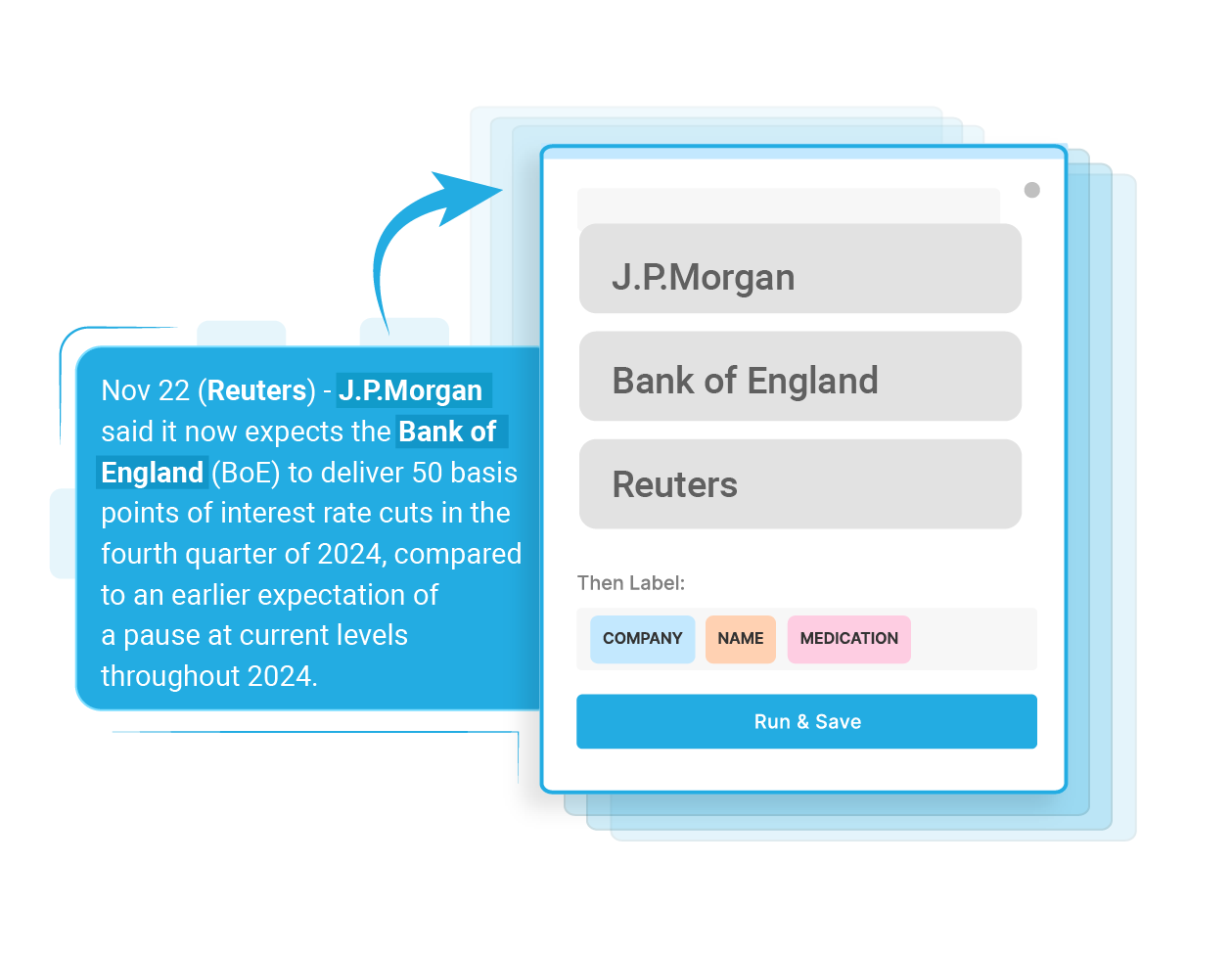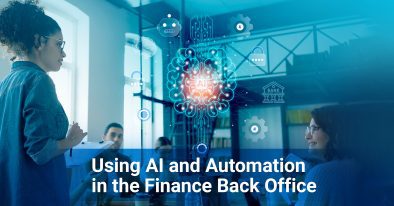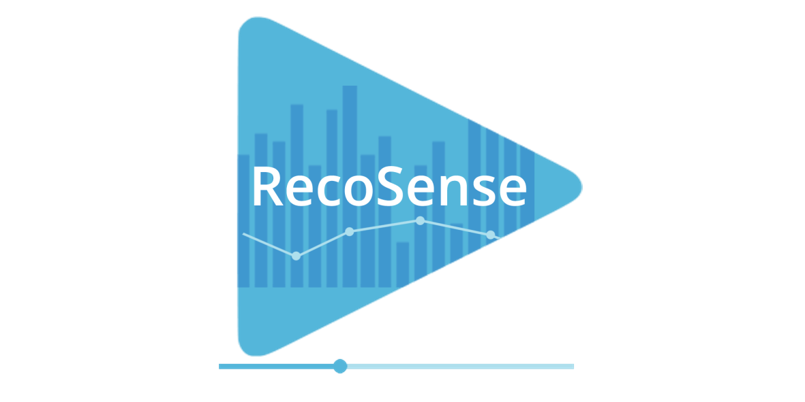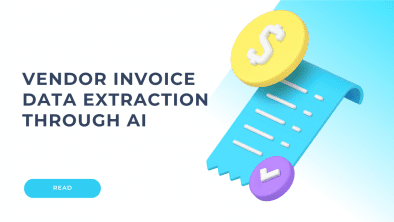Invoices are the lifeblood of any business, containing a wealth of crucial information like customer and vendor details, order specifics, pricing, and taxes. The catch? Extracting data from invoices and matching this data from invoices to other documents can be … Read More
Named Entity Recognition
Named Entity Recognition
Identify key elements like people, places, and organizations in your text with our named entity recognition. It's easy to use and accurate, so you can focus on what's important.

Features

Extract entities from multiple sources
Identify named entities in a variety of text formats, including news articles, social media posts, and emails.

Data Classification
Classify named entities into different categories, such as person, place, organization, or thing.

Accurate and Scalable
Named entities that are ambiguous or that have multiple meanings can also be extracted accurately. Its agile and flexible nature can handle large amounts of data and can be scaled easily as per the requirement.
Use-cases of Named Entity Recognition

Finance
NER extracts information from financial statements, news articles, regulatory filings, and social media posts. It can be used to identify companies, risks, and fraud. This information can be used to make better investment decisions, assess risk, and prevent fraud.

Healthcare
Named entity recognition (NER) extracts information from electronic health records (EHRs), claims data, clinical notes, and patient surveys. Thereby helping healthcare organizations identify patients, predict outcomes, monitor compliance, detect fraud, and improve documentation. NER improves the quality of care by providing accurate information.

Manufacturing
NER extracts data from a variety of sources like text documents- reports, and emails; and from structured data like product data sheets, logs, sensor data, etc. It can be used for product tracking, quality control, supply chain management, predictive maintenance, and safety.

Aviation
Data from aviation databases, news, social media, government reports, conferences, and trade shows are extracted accurately by the NER. Later those data can be used to identify aircraft parts, analyze maintenance logs, monitor flight data, automate tasks, and provide real-time information.

Human Resource
NER extracts data from job postings, employee records, applicant tracking systems, and other sources. It can be used to identify and extract key information from resumes, categorize employees, identify potential candidates, track employee performance, automate HR tasks, and generate reports.

Marketing
NER can be used to extract a variety of data from customer surveys, sales data, and previous marketing reports, which can be used to improve marketing campaigns, target advertising, and develop new products and service
Benefits
1
Improved customer service
Can be used to identify customer names and addresses, which can help businesses provide more personalized and efficient customer service.
Can be used to identify customer names and addresses, which can help businesses provide more personalized and efficient customer service.
2
Reduced fraud
NER can be used to identify fraudulent transactions, which can help businesses save money and protect their customers.
NER can be used to identify fraudulent transactions, which can help businesses save money and protect their customers.
3
Increased sales
Potential customers can be identified quickly, which can help businesses increase their sales and revenue.
Potential customers can be identified quickly, which can help businesses increase their sales and revenue.
4
Improved compliance
Can be used to identify and track compliance with regulations, which can help businesses avoid fines and penalties.
Can be used to identify and track compliance with regulations, which can help businesses avoid fines and penalties.
5
Reduced costs
NER can be used to automate tasks, which can help businesses save money on labor costs.
NER can be used to automate tasks, which can help businesses save money on labor costs.
6
Improved decision-making
Quickly identify trends and patterns in data, which can help businesses make better decisions.
Quickly identify trends and patterns in data, which can help businesses make better decisions.
7
Increased innovation
Can be used to generate new ideas and insights, which can help businesses innovate and stay ahead of the competition.
Can be used to generate new ideas and insights, which can help businesses innovate and stay ahead of the competition.
Blogs

Using AI and Automation in the Finance Back Office
With the advent of Artificial Intelligence (AI), Machine learning (ML), Natural Language Processing(NLP), and Robotic Process Automation (RPA), businesses can streamline workflows, cut costs, and foster sustainable growth amid market challenges. Despite advancements in enterprise resource planning (ERP) systems, a … Read More

How to Spot Fake Bank Statements
With evolving digital transactions and sophisticated fraud techniques, the need for robust fraud detection mechanisms is equally increasing. One area where this is particularly pertinent is in identifying fake bank statements, a common tool fraudsters use to manipulate financial information. … Read More

